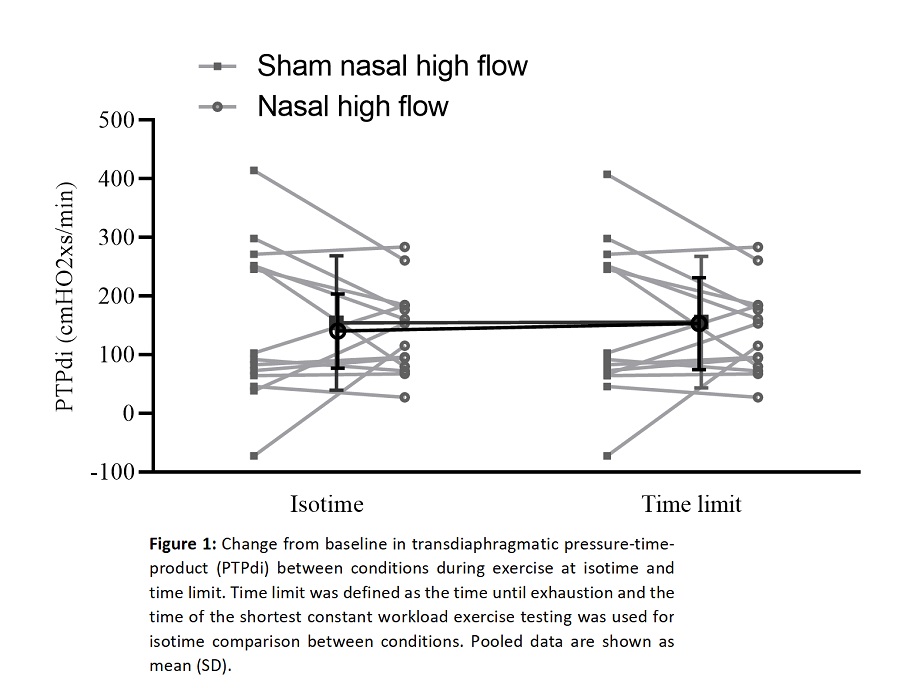Abstract
Background: Nasal high-flow (NHF) may improve exercise tolerance in COPD patients but little is known about physiological adaptation during exercise.
Aim: To assess the effect of NHF on transdiaphragmatic pressure time product (PTPdi) and respiratory mechanics during exercise.
Method: Randomised cross-over trial including COPD patients with a FEV1<50%. Two constant workload exercise tests were performed at 75% of peak power with NHF (30L/min, 34°C) or with sham NHF (nasal cannula not connected). Oxygen flow was set as usual patient?s settings. PTPdi, root mean square of the diaphragm EMG (RMSdi) and neural respiratory drive index (NRDI) were monitored using a single-use transdiaphragmatic catheter.
Results: Fourteen patients were included. They were aged 70 (IQR 57 to 72) years, had severe obstruction (FEV1: 41 (SD 14)) %, and had impaired exercise capacity (VO2peak 14.0 (SD 3.6)) ml/kg/min. We found no effect of NHF on PTPdi, RMSdi, NRDI, heart rate, peripheral oxygen saturation, transcutaneous carbon-dioxide partial pressure and tissue oxygen saturation of the vastus lateralis muscle, but a positive effect on dyspnea at isotime (MD -1, 95% CI -2.5 to 0).

Conclusion: NHF set at 30L/min provides no cardiorespiratory or muscular physiological benefit in COPD patients during exercise. Other potential benefits like better secretion clearance or better recovery following exercise should be assessed.